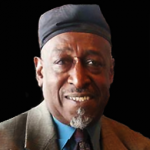 Charlie James is a new writer on The Ave. I think the best way to introduce him is by copying a letter he wrote 7 years ago about the Northwest African American Museum .
Charlie James is a new writer on The Ave. I think the best way to introduce him is by copying a letter he wrote 7 years ago about the Northwest African American Museum .
The complete history of Seattle’s newest museum
I came to the opening of the Northwest African American Museum in Seattle as an uninvited and unwanted spectator. It was not the way I had envisioned celebrating the opening of this facility.
Special to The Times
I came to the opening of the Northwest African American Museum in Seattle as an uninvited and unwanted spectator. It was not the way I had envisioned celebrating the opening of this facility.
I was one of the four people, including Earl Debnam, Omari Tahir Garrett and Michael Greenwood, who led the takeover of the old Colman School in 1985. We were fueled by the idea that a museum there, to tell the history of our community and our people, was essential for the future.
We held control of the site for more than 20 years, the longest-running such claim on a public building in America. I personally stayed in the school for more than six months. I finally left to work for Brock Adams’ campaign for U.S. Senate. But in those six months, we became as one with the building as we walked the hallways, on lookout in the middle of the night.
We merged our hearts and souls with that building. The vision of what we dreamed of accomplishing sustained us through the cold nights, even as we waited for the police to rush the building in an attempt to evict us. Thanks to two African-American members of the Seattle School Board, Michael Preston and T.J. Vassar, authorities held off.
After Adams won his Senate seat, I left the museum effort to work on Adams’ staff in Seattle. I later went to work for the Democratic Central Committee, serving as the first African-American field coordinator in the Louisiana Democratic Party’s long history.
But my heart was in Seattle. Declining an offer to stay in Louisiana, I returned here in 1988, and not long after was pulled right back into the struggle to build the African American Museum.
It is necessary to say that the museum activists, primarily Garrett and sometimes Debnam (who was board chairman by the time I came back to Seattle), were not eager to work with the traditional black leadership, nor were those traditional leaders eager to work with us. This continued even when Norm Rice was elected mayor.
The effects of this difference of view can still be felt today. We wanted a well-developed cultural center as part of the museum project, but it was not incorporated into the current Urban League Village concept of a museum and apartments. It still must be put in place. A museum can tell you about your past, but a cultural center is for the present and the future.
I’m proud to have played a major role in the creation of the two largest African-American cultural institutions ever built in the Pacific Northwest. Martin Luther King Jr. Memorial Park is the second-largest of its kind in the nation and sits in the heart of Martin Luther King County. Fewer than three blocks away is the Northwest African American Museum — it’s almost a cultural park.
Since arriving in 1971 to attend the University of Washington, I have watched the community grow for four decades. I firmly believe that we can make Seattle a model African-American community for the nation.
We already are the best-educated African-American community in the nation, we are politically ahead of most, and our cultural institutions are on par with communities much larger than ours.
But let’s tell the truth about the museum. A museum is a place where the history of your community is supposed to be told as accurately as possible. If we cannot be honest about the history of the creation of the museum itself, then anything we are doing inside is tainted.
Almost everything that African Americans have achieved in America has been through the efforts of activists. People courageous enough to break down racial, political and social barriers were essential in getting this nation to accept racial equality at any level. We celebrate the civil-rights activist every time we observe the birthday of the Rev. Dr. King and march in his honor.
Though I refused to go into the Northwest African American Museum on its opening day and don’t ever intend going inside, I encourage all of you to go and see it for yourself — and celebrate what we went through in making Seattle a comfortable community for people of African descent.
Just don’t forget that so much of what we have achieved was because of people who were willing to push the envelope and make things happen.
It did take many hands to build this project. But, it was our hands that took the boards off the windows at Colman School and occupied it, leading to the Northwest African American Museum being there.
It’s a shame that our handprints cannot really be found anywhere around the Urban League Village at Colman School.
Charlie James is a writer and longtime community activist in Seattle.
Copyright © 2008 The Seattle Times Company